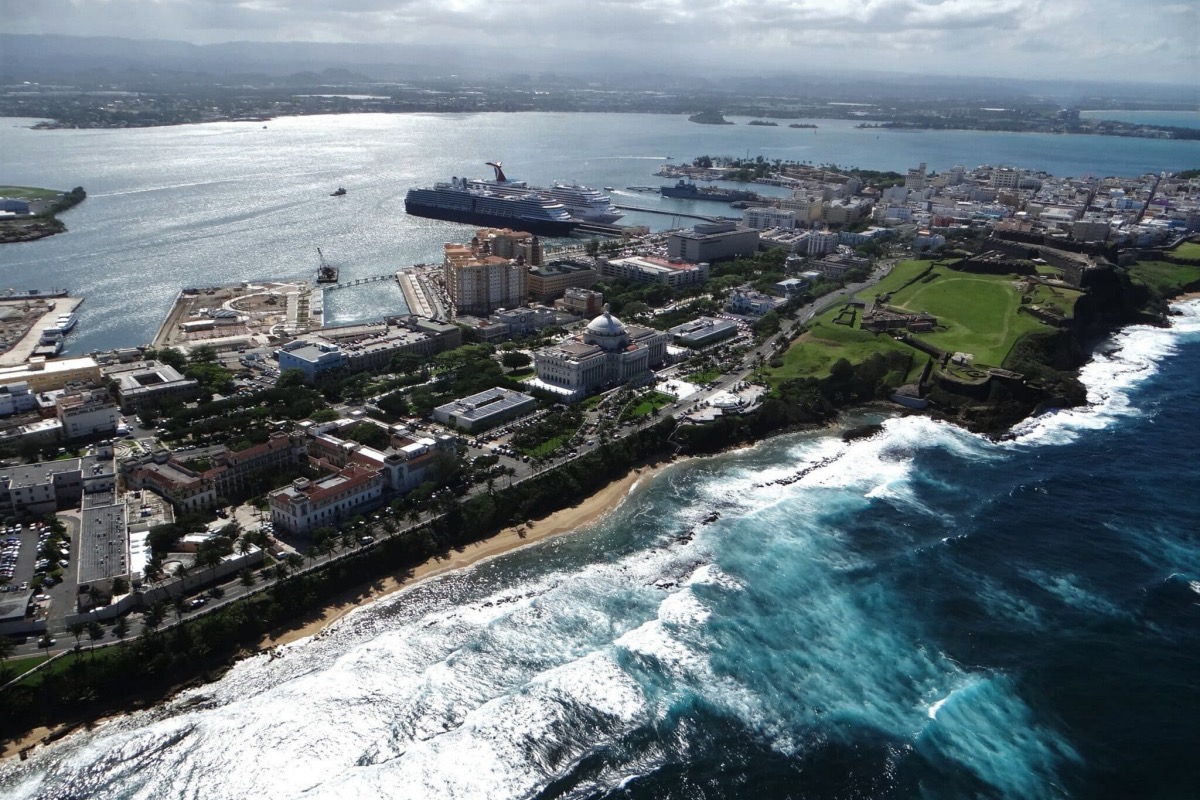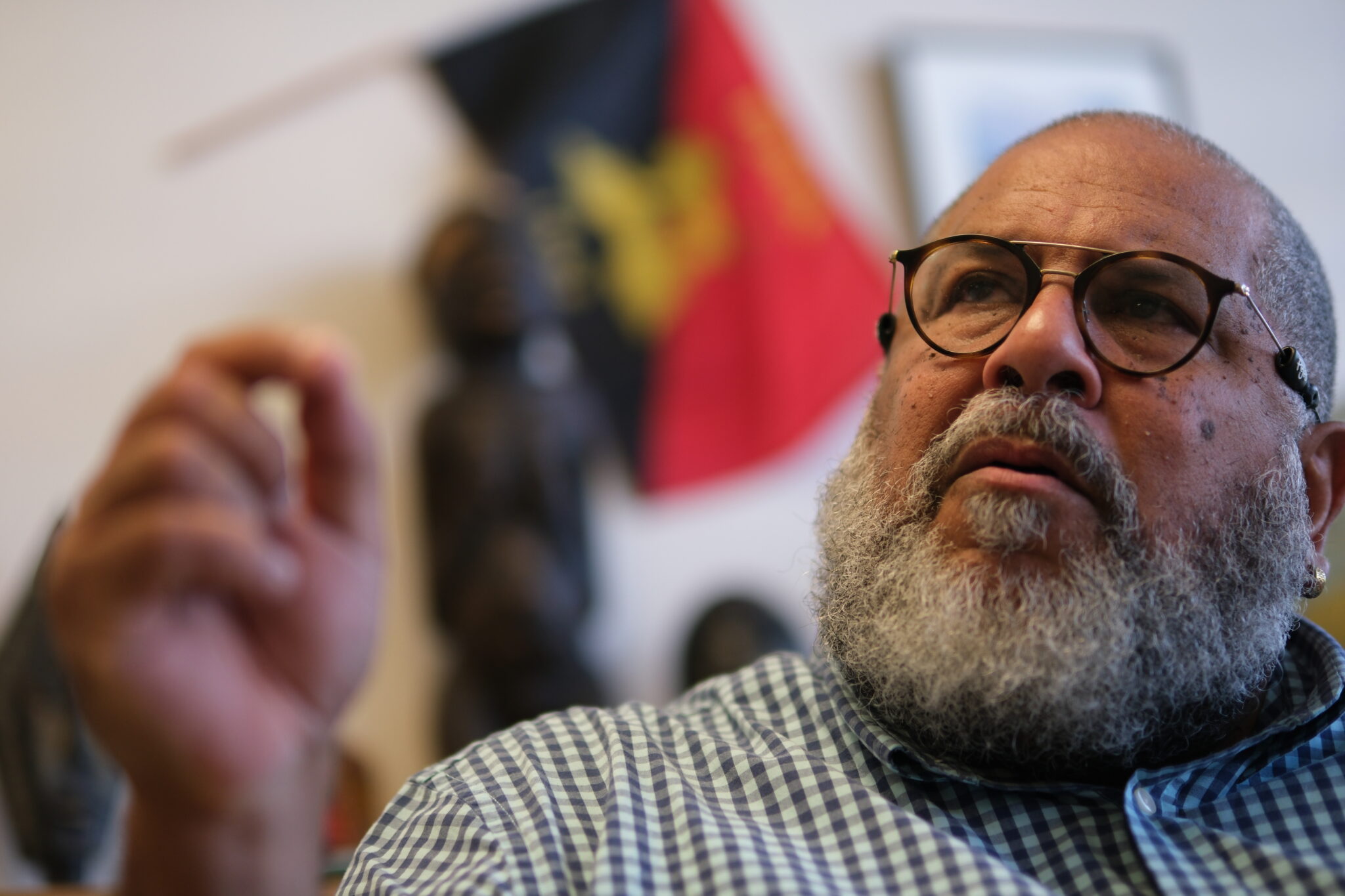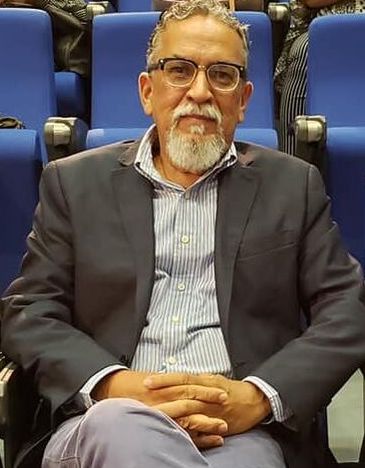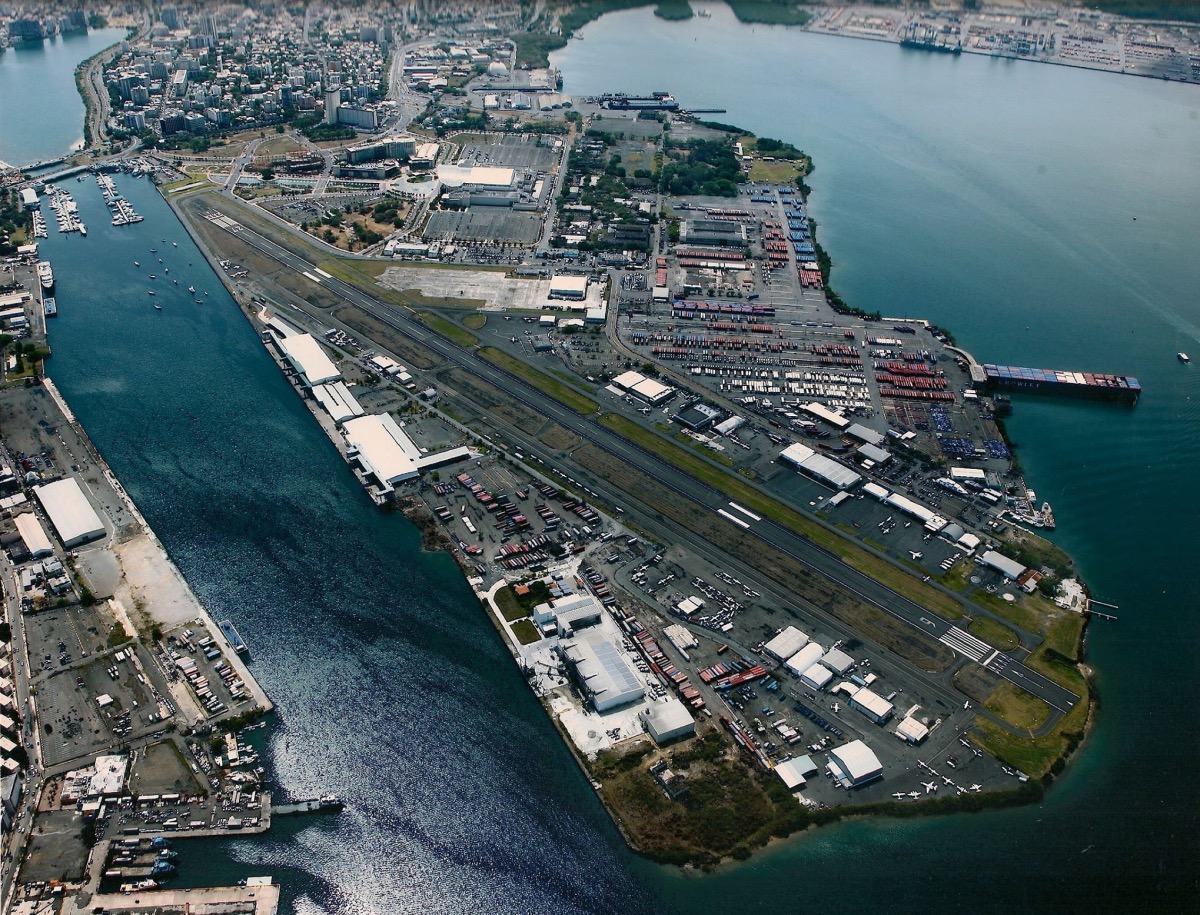

Aerial view of Old San Juan, Puerto Rico (via CPI)
By RAFAEL R. DÍAZ TORRES, CPI
SAN JUAN — Three projects that are in the design stage for the San Juan port zone are part of a development strategy that includes Old San Juan, Puerta de Tierra, Isla Grande, Miramar, and Condado, all of which would not only change the area’s geography but its population as well.
The geographer and urban planner Carlos Guilbe López said the projects in the port area will change the geography of the capital beyond Old San Juan because they are part of a development strategy that includes everything from the waterfront to the Convention District.
“We’re talking about a major change in the pattern of land use,” warned Guilbe López, a professor of geography at the University of Puerto Rico, Río Piedras Campus. “We’re talking about changing land used for cruise ships into multi-use, such as homes, yachts, pedestrian corridors, and specialized retail. That’s what’s being cooked up for San Juan.”


Professor Carlos Guilbe López from the University of Puerto Rico’s School of Social Sciences (Ricardo Arduengo/CPI)
Guilbe López said the proposals for the Bahía Urbana area, as well as in other nearby Puerta de Tierra neighborhood piers, are designed to complete projects that were developed in the first decade of this century, such as the case of the Paseo Caribe luxury apartment complex.
The three projects that are in the design or permitting stage are the lease of piers 6, 7, and 8 for the development of a cluster of attractions in Bahía Urbana targeting cruise ship tourists, the construction of a mega-project behind the Treasury Department building that would include a Hard Rock Café-branded 1,000 rooms hotel, and the remodeling of piers 9 and 10 for luxury yachts.
Guilbe López said all those developments in the area that in prior decades have been done in a fragmented manner and with the appearance that they are isolated from each other, now gain another dimension.
The existing projects, such as the Convention District and Paseo Caribe, would be linked to the new attractions proposed for the waterfront so that there’s a connection, beneficial to the private sector, between Old San Juan, Puerta de Tierra, Isla Grande, Miramar, and Condado. “They want to link Old San Juan as a tourist area to Condado and the Convention Center,” he said.
This development has taken time because these are maritime infrastructure projects that require the endorsement of the U.S. Army Corps of Engineers, said Guilbe López.
“We’re turning the San Juan Bay into an anchor, with a development that is born there and will stretch toward Santurce, through Kennedy Ave. and through Fernández Juncos Ave. It’s San Juan beyond the walls,” said the professor.
These changes will not only alter the flow of visitors and occasional consumers to these areas of San Juan but will also attract a new profile of residents with greater purchasing power. This, Guilbe López said, could lead to the displacement of people and an increase in the crisis of availability of affordable housing, as is already happening in sectors within Puerta de Tierra working-class neighborhood.
“That not only changes the pattern of land use. That changes San Juan’s entire physical and cultural geography,” the geographer said.
Puerta de Tierra an Area of Contrasts
Whether on foot, by bicycle, in a wheelchair, or in a skateboard, moving west from pier 8 in San Juan makes it easier to distinguish the urban border that divides the tourist area, dominated by the Bahía Urbana project, from where the residential area of Puerta de Tierra begins.
It’s a frontier of contrasting infrastructure between the commercial area of the cruise ship docks and tourist restaurants, versus the area of deteriorated buildings that begins to appear soon before getting to piers 9 and 10. That other area has dilapidated properties that are far from the modernity that projects like Bahía Urbana have wanted to project since their inauguration on piers 6, 7, and 8 in 2013.
Like any urban frontier, the area that divides the tourist zone from the historic residential area in Puerta de Tierra is currently at the epicenter of a new project conceptualized again by the government.
In the area of Pier 10 is what was known as the La Coal fishermen’s market. Although the name is still used as a reference to identify it, the fishing activity that in the past characterized that area, today no longer represents an important activity, as anthropologist Manuel Valdés Pizzini concluded in his academic work “De cara al mar.”


Anthropologist Manuel Valdés Pizzini believes that the current projects in the piers will once again spur changes in Puerta de Tierra’s socioeconomic and demographic profiles. (Photo taken from “De cara al mar”)
The current plan to change those docks to turn them into an area for luxury yachts is the most recent chapter of wanting to alter the San Juan islet’s southern geography and of the San Antonio Canal, the anthropologist said in an interview with the Center for Investigative Journalism (CPI, in Spanish).
According to Valdés Pizzini, on his last visit to La Coal in 2019, there was no longer any fishing activity, but rather a yard full of luxury boats.
He added that the area’s transformation has been the “story of the landfill,” since portions of the sea, such as the area of La Carbonera island, were filled with dredged material by the government at the end of the 19th century before the change of sovereignty in 1898. After the Spanish-American War, Spain handed over Puerto Rico to the United States, and ince 1898 Puerto Rico has been a U.S. colony.
Today, there are no recognizable islands or islets in the port area. According to studies that Valdés Pizzini consulted, “it’s very likely that the La Carbonera sector was repopulated in the 1930s by the migratory wave of workers displaced from the mountains and from other sectors of the economy.”
A decade later, the government removed the residents of La Coal as part of its efforts to eliminate the area’s slums.


Aerial view of the San Antonio Canal and the Isla Grande airport in San Juan, Puerto Rico (State Historic Preservation Office/National Register of Historic Places)
For Valdés Pizzini, the current projects in the docks located to the South of the islet of San Juan will affect the fishermen and will again bring about changes in the socioeconomic and demographic profiles of the Puerta de Tierra area.
“There’s an intention to whitewash that area. Paseo Caribe and the (San Juan) Yacht Club are also part of that. Perhaps the only project that has prospered is the Yacht Club, which has been around for a long time and has the same idea of attracting a different type of tourism, so that the island’s wealthy can have their boats there,” Valdés Pizzini said.
Community Activism Against Displacement
Puerta de Tierra has a long tradition of community organization that has focused in recent years on the recovery of its history and the fight against displacement and the decline in affordable housing.
On December 18, residents of this community held the “Community Embrace against Displacement” event, which included marches on the streets and forums in which they reflected on the economic, demographic, and geographic changes in Puerta de Tierra.
There, the organizers agreed that the remodeling of the docks cannot be seen as a set of isolated projects that will not affect the surroundings of Old San Juan and Puerta de Tierra. It was also explained that the hoarding of properties by a few and the drop in affordable housing are not events that are disconnected from the vision that both the government and other powerful sectors have of San Juan.
“There are communities that are on the edge of displacement, of speculation,” planner Raúl Santiago Bartolomei said during his presentation at a discussion that was part of the event.
“In this sense, Puerta de Tierra is not only a look at the past, but also at what the future holds,” said the professor at the Graduate School of Planning of the University of Puerto Rico, Río Piedras Campus, when reflecting on how the cases of displacement also happen in other regions of the island.


